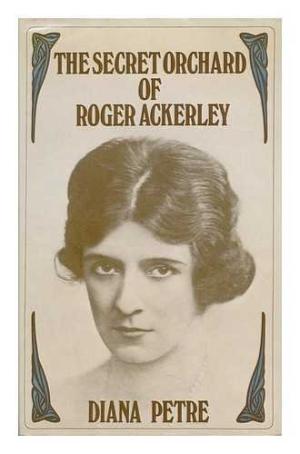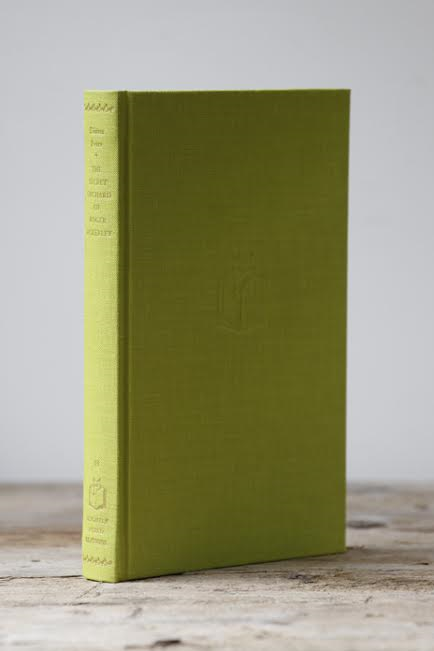
My review of this wonderful book will appear in The Lady in due course but owing to word-count restrictions I am posting my extended review on here. It really is a super book and worthy of the attention it appears to be generating. You can read an extract by clicking here: https://foxedquarterly.com/shop/the-secret-orchard-of-roger-ackerley-no-33/
Diana Petre was a natural writer and confidante to many, however the urge to create was often supressed by her vulnerability when it came to the written word. She killed books before they had a chance. Aged nineteen she married a writer who was in his fifties, and although the marriage was brief he encouraged her talents. Molly Keane’s biographer described Diana as ‘gifted’ and ‘wounded’ as a result of her upbringing. Despite her reservations when it came to the eleventh hour of publishing a book, and her personality flaws (more on that later), we can all rejoice that she wrote her memoirs, The Secret Orchard of Roger Ackerley.
This memoir, although peppered with barmy anecdotes relating to Diana’s life, is centred around her bewitching mother, Miss Muriel Perry. Who was Muriel? Nobody knows. Muriel herself deemed certain things to be ‘common’ and she is a classic example of someone who did not let the truth get in the way of a good story. The truth was ugly and it anchored her to a life she’d rather forget. And so she destroyed evidence throughout the years; passports were cut up, letters were censored, not even her birth was registered. She also had three children fathered by Roger Ackerley, a rich banana merchant also known as ‘the banana king’. The story goes that she kept the books for a respectable pub, and that was how they met. She had been standing in the doorway of his room, and he invited her to come inside to get warmed up. Muriel was soon pregnant, but the baby was stillborn. Twin girls, Sally and Elizabeth, followed (Sally married a future Duke of Westminster, but their true names are censored in the book), and Diana arrived two years later. All three were illegitimate, a damning sentence in those days, and so ashamed by this Muriel would only leave her flat at night-time. They moved a lot in those days, until Roger settled a house for his small family. He had told Muriel he had a wife and children, but this turned out to be a lie: the wife was long dead, and the mother of his other children was his mistress. He had two families, and Diana only discovered this after his death. Sitting on her mother’s bed, at an hotel in Vienna, Muriel revealed that ‘Uncle’ was her father. It seemed at the age of eighteen Diana’s life began, or at least she felt the urge to go on a quest to assemble her parentage. The problem was that both of her parents were mere ghosts, and Muriel gave nothing away.
When the children were young, Muriel vanished and left them in the care of an elderly housekeeper. Aside from her spells of ill health and work during WWI, she moved in with Doris Delevingne. This was at the very beginning of Doris’s pursuits as a courtesan, and Diana herself doubted that Doris knew of Muriel’s predicament. She appeared one day, aghast that her twins were twelve and Diana ten, and none of the children knew what to make of their pale faced, dark haired mother, with long limbs, and a trousseau of exotic clothes. She drank gin in the evenings, when she thought her children were asleep. Diana recalled her roaming the landing like Lady Macbeth, weeping, and going into her bedroom, pressing her face close to hers while she slept. Sometimes it frightened her, and the twins on closer inspection discovered the empty gin bottles stashed at the back of the wardrobe. The twins ran away aged eighteen, and their illegitimacy came to light when the law was powerless in ordering them to return home, as illegitimate children came of age at eighteen and not twenty-one.
Before Diana learned the truth about Uncle, she felt something was a miss. It was a childhood filled with secrets, and she asked Muriel if she was a divorcee. Muriel was furious, and declared divorce to be common. Then she wondered if her mother had been raised in an orphanage, which Diana believed to be on par with a mental asylum. Muriel said Uncle had made her feel safe, but he was often absent, and certainly not involved with the babies until they were older. He, of course, paid for everything: the house, the bills, the children’s school, Muriel’s allowance. When he died Muriel was heartbroken, and on the eve of WWII she remarried a dull widower but living with a man was foreign to her and she escaped by joining the war effort. During WWI she joined the Red Cross and was a nurse, and had an affair with a duke. She did the same during the second war, minus the duke, and was interned in a camp, and was eventually given an OBE. When she was released she came home to London, but her health was bad and her nerves were frayed. Her husband died, but it was not the same as Uncle’s death. The following years were bitter.
After the war Muriel became estranged from her children, with the exception of one of her twins. This twin, named Stella in the book, was Sally, Duchess of Westminster. She was kind to Muriel, gave her money, and paid her hospital bills. Muriel, by then, had invited a widow to live with her in exchange for housekeeping and cooking. The widow-cum-servant was sinister, and Diana did not trust her. But Diana herself was seldom around, only appearing when Muriel was dying of cancer. She appealed to her mother to answer questions about herself, Uncle, and the parts in between but Muriel refused. And so many things went unsaid, and were unresolved. Diana did not go to her funeral but went along with Sally to scatter Muriel’s ashes into the sea.
In many ways the memoir retains an air of sadness but it is not a misery memoir. The prose is witty and often quite light, and written in a conversational way. The foreword explains that Diana presented her memoir as a detective piece, with clues intertwined throughout the text, inviting the reader to help her discover Muriel. I enjoyed the anecdotes, often told out of sync. Many stories were hilarious, and bizarre. In the end I loved Muriel and sympathised with her. She reminded me of the Bolter in Nancy Mitford’s fabled novels, but in the end she came back. I think that says it all.
The Secret Orchard of Roger Ackerley was first published in 1975 and has been reissued by Slightly Foxed: https://foxedquarterly.com/shop/the-secret-orchard-of-roger-ackerley-no-33/


You might like to know that Roger Ackerley’s 1st wife Charlotte was the model for J Singer Sargent’s painting The Woman and the Rose – I have yet to find her death certificate circa 1892. The 1891 census has them living in Chertsey.
(There is a very good genealogical website called Atcherley.org which features a chap who worked in Las Palmas for Elders and Fyffes)